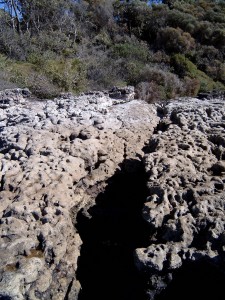People love Rock Of Ages, Cleft For Me, with good reason. Together, the text (written by Augustus M. Toplady) and the most often-used melody (entitled “Toplady,” written by Thomas Hastings) make a fitting hymn for obeying God’s command:
Let the word of Christ dwell in you richly, teaching and admonishing one another in all wisdom, singing psalms and hymns and spiritual songs, with thankfulness in your hearts to God. — Colossians 3:16 (ESV)
Let’s examine it to see what we can learn as songwriters, worship leaders, and disciples of Jesus.
Like many old hymns, the text has survived (and sometimes benefitted from) lyrical revision at the hands of individual poets and hymnal committees. I will use the version my church (Sojourn) sings, because I feel it is the best. It’s a popular version, but I will point out some equally popular textual variants. You can listen to it as sung (and arranged) by my friend Brooks Ritter:
The Basics: Hymn Meter and Subject Matter:
 Church On The Rock in Cracow, Poland
Church On The Rock in Cracow, Poland
“Rock of Ages” is a 77.77.77 meter hymn. As I discussed here, hymns with 7-syllable lines are typically trochaic, meaning the vocal emphasis falls on the odd syllables when sung or spoken. These 7-syllable trochaic lines are abrupt, starting with a bang, and are thus appropriate for conveying strong emotions, such as excitement, remorse, love and repentance. “HELP me!” is a trochaic cry.
So Toplady has chosen a good hymn meter, given that his subject matter is plaintive and pleading: “Jesus, let me hide in you.” Let’s break down the main thought of each verse:
- Save and cleanse me
- I can’t do it on my own
- I can’t even help, or offer anything. I bring nothing to the table.
- This will end badly for me if you don’t intercede. I’m guilty as can be.
Notice the natural progression of thought in these verses. A common problem among songwriters is that they write verses in which each verse beyond the first merely repeats the information or story line of the first, rather than shed new light or advance the plot. Not so with “Rock Of Ages.”
As for the melody, Hasting’s tune evokes these lyrics well. And if I can put in a word for a friend, I think Brooks’ chord structure improves upon it by tying the melody even closer to the poetry.
Verse By Verse:
Rock of Ages, cleft for me,
Let me hide myself in Thee:
Let the water and the blood,
From thy wounded side which flowed,
Be of sin the double cure;
Save from wrath and make me pure.
The rhyme scheme for these six lines (and the rest of the hymn) is AABBCC, meaning that each couplet (unit of two back-to-back lines) rhymes. Notice how strong action verbs propel the story: cleft, hide, save, make. Learn from Toplady; use strong verbs.
We also get the immediate, colorful metaphor “Rock of ages.” Rock is a common biblical metaphor for God, used over 20 times this way in the book of Psalms alone. But Toplady’s use of this metaphor stems from an earlier source: Moses, who had requested to see God’s “glory.”
God explained that his glory was too great for frail, fallen flesh to see. Moses would die at the sight of it. So God says:
and while my glory passes by I will put you in a cleft of the rock, and I will cover you with my hand until I have passed by. — Exodus: 33:22 ESV
 Rock cleft at Hyam’s Beach, New South Wales, Australia. Big enough for hiding.
Rock cleft at Hyam’s Beach, New South Wales, Australia. Big enough for hiding.
So Toplady identifies with Moses. He knows we must all appear before the judgment seat (2 Corinthians 5:10). We will stand there naked, helpless, foul (words Toplady will use in a later verse). There is only one solution — “Hide me in the cleft of the rock!” And if there is any doubt, he reveals the identity of this rock, cleft for us: “Let the water and the blood/ From thy wounded side which flowed” — it’s Christ. He is saying “Credit the righteousness of Christ to my account, now and on that judgment day.”
The other reason he came up with “rock” as a metaphor is that a bad storm had rained down on Toplady while he was traveling one day, so he hid in a cave. Purportedly, the image of a rock as a shelter from storms of life occurred to him there, and he began to write the lyrics on a playing card he’d found on the floor of the cave. This is often the way it works with worship songwriters today: biblical witness combines with life experiences to give us ideas.
The first verse ends on a masterful note, but Toplady can’t take credit. His original ending read:
Be of sin the double cure,
Cleanse me from its guilt and pow’r.
When Toplady wrote “Rock of Ages” in 1763, “cure” and “power” rhymed. This is something many people don’t realize — when you look at old hymns that seem to contain a lot of imperfect rhymes, it is often because pronunciation has changed over the centuries.
In 1815 Thomas Cotterill improved the rhyme of the couplet by changing the final line to “Save from wrath and make me pure.” This, then, is the “double cure.” But he aimed to do more than change the rhyme. He gave us a deeper meaning: Christ not only saves us, he sanctifies us.
On to the second verse:
Not the labors of my hands
Can fulfill thy law’s commands;
Could my zeal no respit know,
Could my tears forever flow,
All for sin could not atone;
Thou must save, and thou alone.
This is a repudiation of works-based theology and emotional excess. He probably meant lines three and four as a shot on the Wesleys, with whom he feuded, being contemptuous of the “zeal” and “tears” that were hallmarks of Wesleyan revivals. Toplady’s own zeal for the gospel — and his pride — sometimes got the better of him. But these lines are true. We can’t earn salvation with a show of emotion, whether contrived or real.
The singer doesn’t go anywhere in this verse. He tells of his insufficiency, aware that only God can save. We’ll see movement in the next verse:
Nothing in my hand I bring,
Simply to the cross I cling;
Naked, come to thee for dress;
Helpless, look to thee for grace;
Foul, I too the fountain fly;
Wash me, Savior, or I die.
The words “Naked,” “Helpless,” and “Foul” are important here. Toplady names our state in three successive lines that bring us back to the Garden of Eden after the Fall. But while our forbears hid in vain from God, he comes forward, knowing the futility of hiding in anything but the cleft of the rock:
- We are naked, in need of dress. Our fig leaves will not suffice.
- We are helpless. The serpent who beguiled us has no comfort for us now, as judgment nears.
- We are foul, stained to the core by sin.
All that is left for us, as we cling to the cross, is to plead “Wash me Savior, or I die.”
Note his strong, short verbs in this crucial turning-point of the hymn: “bring/ cling/ come/ look/ fly/ wash/ die.” And now the end:
While I draw this fleeting breath,
When mine eyes shall close in death,
When I soar to worlds unknown,
See thee on thy judgment throne,
Rock of Ages, cleft for me,
Let me hide myself in thee.
Toplady concludes his poem with the same couplet with which he started it, bringing us full circle to the only thing that can save: Jesus Christ, the rock of ages.
Many hymnals contain an alteration of Toplady’s original line 4. The alteration reads: “And behold Thee on Thy throne.”
This is unfortunate because it weakens the whole point of this hymn: We are helpless in the face of sure, perfect justice and judgment. Of course we know God will judge from his throne, but Toplady drives the point home with “See thee on thy judgment throne.”
Again, Toplady’s verbs are succinct and strong: draw, close, soar, see, cleft, hide. And the lines contain plenty of internal rhyme, like “mine/eyes,” “soar/worlds,” “See/ thee,” “hide, myself.”
Memorable, evocative, theologically astute — “Rock of Ages” has rightfully taken its place among the great hymns of the Church. This is a song that can sing you home.
- Top photo by Jennifer Boyer, used via Creative Commons license
- Bottom photo by Richard Grant, used via Creative Commons license
{ 3 trackbacks }